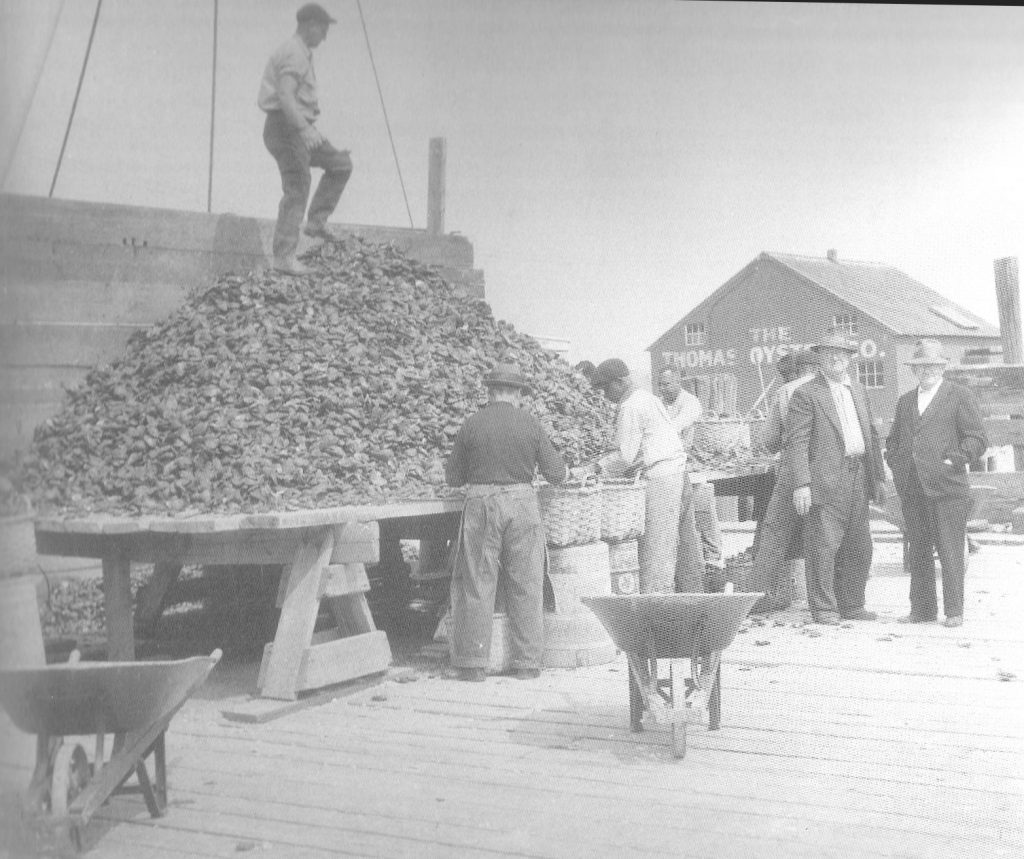
The Quinnipiac Oystering Community
This week we continue our discussion of New Haven Topography.
When the first white settlers arrived at their “new haven” in 1637, they encountered the broad flat land that would become the original Nine Squares—the first planned community in the Colonies. To the southwest lay the marshy West Creek, up which they had sailed; today West Creek itself lies buried beneath the Route 34 Connector. To the southeast lay East Creek, which would one day become the basis for the Farmington Canal. It too would eventually become piped away; that riverbed would become the foundation for the New Haven Railroad’s tracks that would serve Hartford and New London.
It was only later that a second community began to form around the Quinnipiac River: it was originally called “Dragon Town” or “Dragon Point,” in reference to the “sea dragons” or harbor seals that inhabited the banks of the river when sailors first visited the area. Although this community was actually part of New Haven, its original farmers founded a separate village there in the late 17th century.
A hundred years would pass before a wooden bridge would be built over the Quinnipiac River, linking together the community that was springing up on both sides of that river. Nearby lay the first Indian reservation in North America—set aside for the confinement of the Quinnipiac Indians.
At first, Dragon Town was little more than a clustering of fishing huts, placed along the tidal estuary. But with abundant access to New Haven harbor, and bordered by two rivers, this little community developed an industry and an economy that was primarily based on oystering. By the mid-1800s, that economy was thriving, and the residents of Dragon Town voted to change its name to Fair Haven; long before, the legendary captain Richard Russell, upon seeing this beautiful area, had called it a “fayre haven.”
The American oyster was vital to everyone in Fair Haven; indeed, at one time every resident of the area was active the oystering process. The rapidly changing temperature and salinity of the water in the Quinnipiac River and in the harbor were ideal for the growth of the oysters, and thus they thrived. The poorest soul could hollow out a log canoe, as the Quinnipiac Indians had done, and tong for oysters using two rakes that were on fifteen-foot poles and arranged like scissors, in order to catch as many as forty oysters at a time. Those of better financial means would dredge for oysters, using a basket with a toothed bar, that was dragged over an oyster bed, harvesting as many as two hundred oysters at a time.
From this growing industry came the need for a commercial boat that had attributes that best qualified it for the peculiar needs of oystering. Thus in the 1840s was born the New Haven Sharpie: this style of small sailing craft became so popular with the New Haven oystering community that it began to be seen all up and down the Atlantic coast.
The Sharpie was within the means of the poorest fishermen. Typically a Sharpie was 25-35 feet long; it was propelled by means of one or two sails. It could be fitted with culling boards on either side of the cockpit; the man that was tonging would swing his tongs up, dump the contents of his tongs onto the culling boards, and then separate out the oysters from the other materials that came up with them. Ideally, one man would do the tonging, and a second man—perhaps his son—would perform the culling. By the mid-1800s, the oyster beds had grown and extended out past today’s breakwaters, which did not exist at the time.
At the end of the workday, the oystermen would return to their homes in Fair Haven, along with their catch. The homes there were constructed according to the peculiar needs of the industry, as may still be witnessed today: the oystermen entered their homes through the mud rooms which were at the ground level. There, families would sit and shuck the day’s catch.
Eventually, pollution and the oysters’ natural enemies brought the industry to bankruptcy, and by 1930, only one oyster company remained in operation in the area. The world was going through the Second Industrial Revolution, and Fair Haven was about to join.
Today, the only vestige of this once-flourishing industry is a mountainous pile of oyster shells, situated along Quinnipiac Avenue, just south of the Grand Avenue bridge. It’s worth a look when you are in the area!